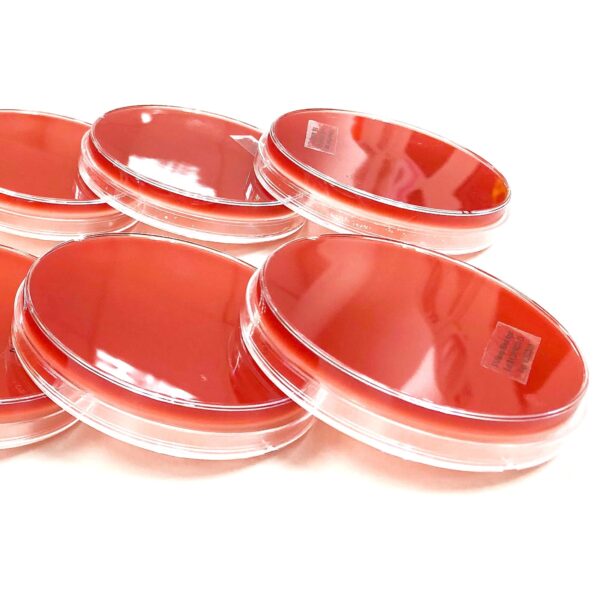Theophylline is a methylxanthine compound characterized by two methyl groups attached to a xanthine molecule. Theophylline is structurally related to caffeine and theobromine, which are naturally occurring compounds found in certain foods and beverages. It is found in cocoa beans, brewed tea, and kola nuts.
What is Theophylline?
The chemical structure of theophylline consists of a xanthine ring system. It is a dimethylxanthine, with its two methyl groups located at positions 1 and 3. The chemical formula of theophylline is C7H8N4O2. The xanthine ring system and methyl groups in theophylline are responsible for its activity.
Source: Wikipedia
How is Theophylline Produced?
Theophylline was first extracted from tea leaves. It is now synthesized by the Traube method. In this process, N, N-dimethylurea reacts with cyanoacetic ether in the presence of acetic anhydride to produce cyanoacetylmethylurea. It then cyclizes into 6-amino-1,3-dimethyluracil, which, upon reaction with nitric acid, transforms into 5-nitroso-6-amino-1,3-dimethyluracil. Reducing the resulting nitroso group produces 5,6-diamino-1,3-dimethyluracil, which is then reacted with formamide to produce the desired theophylline.
An alternate method uses dimethyl sulfate, 6-aminouracil, a sodium hydroxide solution, and water to obtain 6-amino-1,3-dimethyluracil. This substance is added to acetic acid, water, and a sodium nitrite aqueous solution to obtain 6-amino-5-nitroso-1,3-dimethyluracil. Theophylline is produced using a palladium carbon catalyst and methanol in a hydrogen high-pressure reaction kettle.
Properties of Theophylline
| Physical Form | Powder |
| Color | White |
| Odor | Odorless |
| Taste | Bitter |
| Storage Temperature & Conditions | 20-25°C |
| Molecular Weight | 180.16 g/mol |
| Melting Point | 273°C |
| pKa | 8.81 |
| Solubility in water at 70.7 °F | 1-5 mg/mL |
Theophylline Formulation Considerations
Difference Between Theobromine and Theophylline
Caffeine (1,3,7-trimethylxanthine), theobromine (3,7-dimethylxanthine), and theophylline (1,3-dimethylxanthine) are the most well-known compounds of the family of methylxanthines and are naturally present in plants. Caffeine, theobromine, and theophylline are types of xanthine alkaloids.
The key differences between caffeine, theobromine, and theophylline lie in their relative abilities to be absorbed by the body and how long their effects last. Caffeine is more easily absorbed and has a shorter half-life of 5 hours, theobromine is weakly absorbed with a moderate half-life of 7-12 hours, and theophylline is easily absorbed and has a comparatively longer half-life of 8 hours.
Absorption, Metabolism, and Excretion
Theophylline is metabolized extensively in the liver. It undergoes N-demethylation via cytochrome P450 1A2. It is metabolized by parallel first-order and Michaelis-Menten pathways. A study revealed that the bioavailability of theophylline is 77.1 ± 5.4% via oral dosage. It is excreted unchanged in the urine (up to 10%).
Theophylline as a Dietary Supplement
As a dietary supplement, theophylline is sometimes marketed for its stimulant and thermogenic properties. It is believed to increase metabolism and may promote weight loss by increasing the breakdown of fats and carbohydrates in the body. Theophylline may have anti-inflammatory effects and help reduce oxidative stress in the body. It may have anti-obesity effects by increasing fat oxidation and reducing fat accumulation.
However, theophylline is a potent drug with a narrow therapeutic range, and can have serious side effects when interacting with other medications. Therefore, using theophylline as a nutraceutical is not recommended without the supervision of a healthcare professional.
Medicinal Use of Theophylline
Therapeutic Effects
Theophylline is primarily used as a bronchodilator. It works primarily by relaxing the smooth muscles in the airways and helps to open the passages for improvement in breathing. In 1922, it was approved as a clinical treatment for asthma after identifying its bronchodilator effect.
Mechanism of Action
Theophylline relaxes the smooth muscles in the bronchial airways and pulmonary blood vessels. It also reduces the airway responsiveness to histamine, adenosine, methacholine, and allergens. It exerts these effects mainly through two distinct mechanisms:
- It acts as a competitive nonselective phosphodiesterase inhibitor (inhibiting type III and type IV phosphodiesterase), which increases the concentration of intracellular cAMP, activates protein kinase A, inhibits TNF-alpha, and leukotriene synthesis, and also decreases inflammation and innate immunity.
- It is also a nonselective adenosine receptor antagonist. It acts on A1, A2, and A3 receptors with almost the same affinity, possibly explaining theophylline’s cardiac effects. Adenosine-mediated channels also increase the contraction force of diaphragmatic muscles by enhancing their calcium uptake.
Medicinal Use
Theophylline acts as a smooth muscle relaxant, bronchial dilator, diuretic, cardiac, and central nervous system (CNS) stimulant. It can be used in the management of:
- Chronic obstructive pulmonary disease
- Asthma
- Infant Apnea
- Anosmia
Safety and Regulatory Considerations
| FDA Information | In the United States, theophylline is classified as a prescription drug by the Food and Drug Administration (FDA). It is listed in the FDA’s Orange Book. |
| EU Information | In the European Union, theophylline is regulated by the European Medicines Agency (EMA). |
Safety & Toxicity of Theophylline
As with other methylxanthines, theophylline toxicity can lead to gastrointestinal distress, insomnia, and tremor. Reports also exist of severe nausea and vomiting, cardiac arrhythmias, hypotension, and convulsions, more commonly in cases of overdosage.
Theophylline has a narrow therapeutic range, meaning that the difference between a therapeutic and toxic doses is relatively small. Levels even slightly above the therapeutic range can have adverse effects both acutely and chronically. Monitoring blood levels of theophylline is crucial to avoid toxicity.
Identification Numbers
| IUPAC Name | 1,3-dimethyl-7H-purine-2,6-dione |
| CAS Number | 58-55-9 |
| EC Number | 200-385-7 |
Fun Facts About Theophylline
- Theophylline was chemically identified around 1888 by the German biologist Albrecht Kossel. It was extracted and synthesized in 1895 and used as a diuretic.
- Theophylline has been used to treat apnea in premature newborns. It helps stimulate the respiratory center in the brain, reducing the likelihood of apnea episodes in premature infants.
- The World Health Organization (WHO) includes theophylline on its List of Essential Medicines, recognizing its importance in basic healthcare systems.




